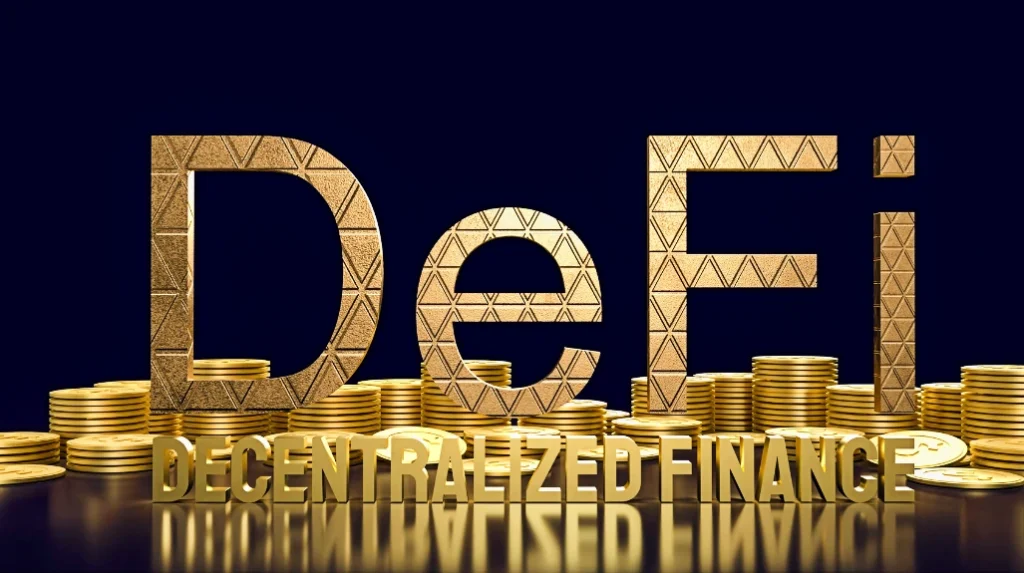DeFi Liquidity Mining: Everything You Need to Know About
Looking to get into DeFi (decentralized finance) but not sure where to start? Check out our guide on DeFi Liquidity Mining!
Liquidity mining is a term that you may have heard lately but aren’t quite sure what it means. Don’t worry, you’re not alone. It is still relatively new and undefined concept in the world of cryptocurrency.
Token holders earn rewards based on how many tokens they hold. But it can be a little confusing to determine which exchanges offer liquidity mining and how to participate.
That’s why we’ve put together this guide. We want to help you understand what liquidity mining is, USDT liquidity mining plus we will discuss what its risks are and whether it is worth investing in.
What Is Liquidity Mining?
Crypto holders lend assets to a decentralized exchange in return for rewards through liquidity mining. This strategy is a great way to get involved in a DeFi protocol and earn some extra income. By contributing your crypto assets, you enable other participants to trade easily on that platform. In return, you receive a share of the platform’s fees or newly issued tokens.
Liquidity mining is similar to staking in that it requires no upfront investment and returns rewards as soon as there is sufficient demand for the underlying platform. However, instead of staking tokens, Liquidity miners contribute their own crypto assets to a DeFi protocol, which allows them to claim a share of its fees or newly issued tokens in return for their contributions.
What Is DeFI Mining?
DeFi Liquidity Mining Explained:
DeFi, or Decentralized Finance, leverages blockchain technology and smart contracts to offer various financial services in a trustless and transparent manner. Liquidity mining is a practice within DeFi where users contribute assets to liquidity pools and are rewarded, typically with the platform’s native tokens. These rewards can incentivize participation and enhance the liquidity of the protocol. Users may enjoy benefits such as discounted fees, governance rights, and a share in the protocol’s revenue, depending on the specific DeFi platform’s offerings.
Terminology in DeFi Explained:
You will need to be familiar with and understand certain terms and concepts that have contextual meaning if you want to effectively participate in a DeFi protocol as a liquidity provider.
The following are some of them:
● DEX: The term decentralized exchange refers to a platform that operates independently of centralized parties like corporations.
● Yield: In the form of fees or LP tokens, this is the reward offered to liquidity providers
● CeFi: It describes the financial institutions within the cryptocurrency market that offer services related to centralized finance.
● TradFi: Defining traditional finance as it is used here, TraDeFi refers to conventional financial institutions such as banks, stock exchanges,
● AMM: The automated market maker (AMM) holds liquidity reserves within a pool through the use of smart contracts.
How does Liquidity Mining work?
It is an approach that investors can take advantage of as a way of getting into and out of positions on the DeFi platforms, the trading fees for which can be used partly to reward those who enter and exit positions on the platform.
There is usually a trading pair associated with each pool, for example, ETH/USDT, which is often the case. It is possible for an investor to choose whether to deposit either asset into a liquidity pool as a liquidity miner (or provider). By depositing their assets into the DeFi platforms, they make it easier for traders to get access to those same assets at lower costs and with increased liquidity.
What is a DeFi Liquidity Mining Pool?
A Cryptocurrency liquidity pools are digital piles of cryptocurrency protected by smart contracts. This results in creating liquidity for faster transactions, which is essential for any business that needs to move large amounts of money quickly. A major component of a liquidity pool is automated market makers (AMMs), who act as go-betweens between buyers and sellers
What Is Coin base DeFi Liquidity Mining?
DeFi Liquidity Mining is a process by which Coin base collects data from its users in order to better understand their buying and selling habits. This information is then used to improve the user experience on the platform, as well as make more informed decisions about how best to serve customers.
DeFi Liquidity Mining Coin base Explained:
Coin base DeFi Liquidity Mining means that a trader can buy and sell assets quickly without affecting their prices. Considering how liquid an asset is can be determined by how many buyers and sellers there are or by how much cash and crypto are being exchanged between buyers and sellers.
Coinbase DeFi Liquidity Mining helps you take advantage of opportunities that may not be available to you otherwise. For example, if you see that someone is consistently buying and selling large amounts of Bitcoin, this could be an indication that they’re anticipating a price increase.
Can You Lose Money in Liquidity Mining?
It’s a question that’s been on a lot of people’s minds lately, as the popularity of DeFi protocols has exploded and more and more people are looking to get involved in liquidity mining.
The answer, unfortunately, is yes – you can lose money in liquidity mining. It is no different from every investment strategy that has benefits and risks, and investors need to carefully consider these risks before investing. In mining for liquidity, there are several risks to consider: There are a number of risks associated with DeFi protocols that can lead to losses for liquidity miners.
That said, it’s important to remember that there are also risks associated with traditional financial systems. So while you can lose money in liquidity mining, you can also lose money in the stock market or by holding cash in your bank account (if inflation goes up).
Is Liquidity Mining Legit?
Crypto investors have been warned about a scam using a liquidity mining investment strategy by the Federal Bureau of Investigation (FBI). An investigation revealed that more than $70 million had been lost by victims as a result of this scam, according to authorities While there are some legitimate reasons to liquidity mine, it’s important to be aware of the risks involved.
What are the DeFi Liquidity Mining Risks?
There are a number of risks associated with liquidity mining, including the risk of losing your investment (due to price fluctuations), the risk of being scammed (by fraudulent exchanges), and the risk of not being able to sell your coins at an appropriate time (if you decide to exit the market).
So while there are benefits to liquidity mining, it’s important to be aware of all the risks before jumping into this type of investment.
Is Liquidity Mining Safe?
There’s a lot of talk about blockchain and its potential applications, but few people know about liquidity mining. It is a process by which blockchain assets are exchanged for other assets or tokens. It’s essentially an automated way of increasing the liquidity of your holdings, and it can be used to protect you from traditional counterparty and custodial risk.
However, funds are still deposited into a pool that serves as a temporary custodian in DEXes’ liquidity pool model despite its protection from counterparty and custodial risk. Despite bugs, failures, hacks, and exploits, funds can still be lost if the smart contract is compromised.
That’s why it’s important to choose an exchange that has robust security measures in place – after all, your money is at stake!
What is DeFi Mining AI?
DeFi Mining AI refers to the application of artificial intelligence in optimizing decentralized finance (DeFi) mining strategies, including liquidity mining and yield farming. AI algorithms analyze market data to predict trends, manage risks, and identify the most profitable DeFi pools, enhancing the decision-making process for investors.
How can AI improve my DeFi mining returns?
AI improves DeFi mining returns by providing advanced data analysis, trend prediction, and automated decision-making. By analyzing historical and real-time market data, AI can help identify optimal entry and exit points for liquidity provision, reduce the risk of impermanent loss, and suggest strategies to maximize yield across various DeFi platforms.
Conclusion
Liquidity mining can be an exciting investment, there are also risks involved. In order to help you stay safe, this blog talked about those risks and more. Make sure you read and apply other strategies before investing in any cryptocurrencies or tokens!








